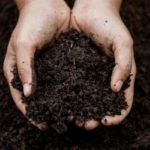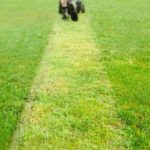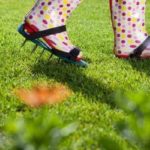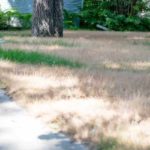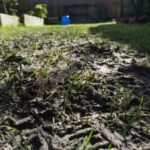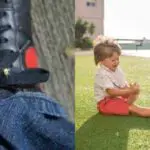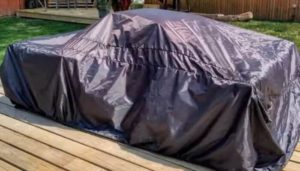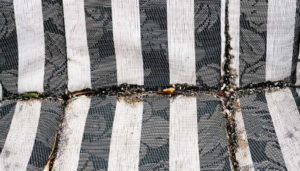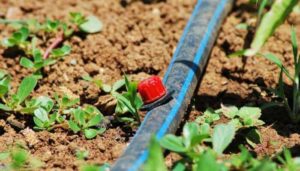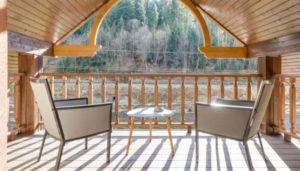That’s a really good question. It can be tricky to answer because it really depends upon your climate, the kind of grass you’ve got, and the situation with your grass.
The rule of thumb is, that if you live in an area where the climate remains over 40°F/ 4°C or where the air rarely gets to freezing temperatures and the rainfall won’t keep your lawn healthy enough, you should consider watering your lawn during winter. Otherwise, don’t water your lawn during winter.
I’ve lived mostly in the southeastern United States, and though it can be stiflingly hot, there are some months in the wintertime wherein the temperature will often reach freezing. Therefore, I had only watered my lawn during winter when it was a new growth lawn after a build. We had planted winter rye and were waiting to plant fescue.
Anyway, I decided to dive into the science behind it and give you some helpful hints and ideas for judging whether to water your lawns during winter in the area you happen to live. Just keep reading to find out more.
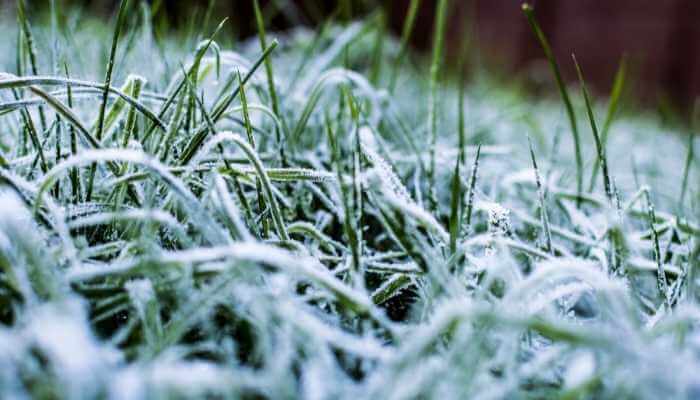
What Happens to Plants in Winter?
There are shorter days in winter, therefore the energy used for photosynthesis isn’t as plentiful. Also, the water that is usually used by plants in that process is often frozen. When water is frozen, it cannot be absorbed by a plant. Therefore, most plants will go dormant during the winter season.
It really depends upon the plant and how well you care for it. Some plants will go through their entire life cycle in one season and simply drop seeds that will grow in the next warm season. These are known as annuals. Perennials will live multiple years, but in winter or colder weather, they will go into a dormant state. During this dormancy, they live off of stores of food until spring or warmer weather.
Deciduous plants (whether shrubs or trees) shed all of their leaves in fall to prepare for winter. They go dormant and do not use the leaves for photosynthesis during that time frame. Evergreens, on the other hand, have leaves that are adapted to continue to thrive in cold weather and seasons with less moisture. Though their waxy leaves may curl in extreme cold, they keep their foliage. Sometimes, they even continue to photosynthesize though at a slower rate.
The grass is a similar situation. During winter the older grass leaves will continue to die, but new leaves will not grow from the dormant plant. That’s what causes your lawn to look kind of yellow or brown. The grass isn’t dead, it’s dormant.
Also, cold wind can cause a further loss of moisture, making grassy areas that get a lot of wind turn brown quicker than other portions of your lawn. But if your temperatures are constantly near or below freezing, there’s no point in watering, because the plants won’t get the moisture.
Something else to keep in mind is that weeds will also go dormant in the winter. This time is perfect for taking steps to get rid of the weed problem in your yard.
What Kind of Impact Does Watering in Winter Have?
Any time the temperatures reach 40°F/4°C Even if your rainfall amount is low and you test your lawn and realize you need to water your lawn during winter, you can get away with watering only once or twice a month. Make sure you are not watering too much to prevent yourself from dealing with a muddy yard.
Should You Run Sprinklers in Winter?
In most states, if you have at least an inch and a half of rain every winter month, between that and the grass growth has slowed down, there is no need to run your sprinklers. The grass should be getting enough water from nature. And you don’t want to risk your pipes and ruining your sprinkler equipment by keeping water in them when temperatures get below freezing (32°F/0 0°C). After all, water expands as it freezes and it will burst your pipes.
| Climate | Should You Water? | Equipment |
|---|---|---|
| Warm climate, winter days are mostly >40° with sufficient rainfall | Water when rainfall is not sufficient. You will probably need to water much less than summer. | Do nothing with the equipment in mild winter weather. |
| Temperate climate, mild winters with some frost. | Rainfall and snow should be sufficient all winter. | Best to cover and store all watering appliances before freezing weather. |
| Cooler climates, winters below freezing a lot of the time and for weeks at a time | Grasses here go dormant. No need to water during winter. | Cover or store all watering implements |
Remember, you can tell what kind of grass you have by looking into it at your local coop, your local extension services, or online. I use The Old Farmer’s Almanac a lot. I also discuss some information you may find helpful in previous articles.
You can always tell when it’s time to water your lawn if you see the blades still growing but wilting. You don’t want to water it too much or the root system won’t grow strong. But at the same time, if you can walk across it and the footprints stay for more than a couple of hours, it might be time for some water.
Want to be sure you’re watering enough? The cup trick has always worked for me, whether summer or winter. You place your sprinkler and then place coffee cups about 5 feet apart out from the sprinkler in a line. Once those cups get one inch (2.5cm) of water in them, your lawn in that area should be wet enough.
Some Things You Can Do to Keep Healthy Grass Through Winter
Maintaining a schedule of watering your grass if there is not enough rain up until the first frost can keep a good amount of moisture available through the non-frozen portions of winter to help. If you cut your grass in the fall, be sure not to lower your blades to less than 3 inches (7.6cm).
Also, if you aerate and fertilize or just fertilize your lawn in late fall, this can get you an extra layer of new grass. That layer can then insulate the older grass during the winter. Removing Leaves that fall on your grass is important for a winter lawn as well. You want the lawn to be insulated within, not smothered from above.
When your grass is going through a freeze spell, try to keep off of it. When the grass is frozen, it’s weaker and can be crushed down, removing portions of the leaves that are still alive. The crown of the leaf is the portion at the soil level. When you walk on the grass while it’s frozen, this is the portion that can be broken. Unfortunately, that is the very portion that can keep your grass alive during winter.
In Conclusion
As you can see, watering is only a portion of the situation for winter lawn care. You have to be careful with it and know when to water and when not to water. I hope this article gave you the information you needed and if so, feel free to look around for more informative articles about landscaping and boosting your backyard.
